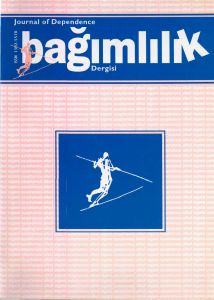Smoking attitude and behaviour of a public organisation data processing centre workers
Keywords:
Cigarette smoking, workers, attitudeAbstract
Objective: This study was conducted to find out the prevalence of smoking, to evaluate the characteristics associated to smoking behaviour and the opinions about the regulations and the acts related to smoking among Data Processing Centre workers.
Method: This cross-sectional study was conducted on 190 persons with a 37-item self-administered questionnaire on June, 2005.
Results: 48.9% of the participants were men; 44.1% of men and 55.9% of women workers were current smokers respectively. Staring smoking before the age of 17 was 43.9% for men and 11.5% for women (p=0.03). 51.3% of the workers perceived anti-tobacco campaigns’ target as smokers. More than 85% of the participants approved the anti-tobacco act (Act No:4207) and 79.9% of workers thought that The Offences Act must be observed in the work place.
Conclusion: Although smoking behaviour wasn’t different between men and women, the difference in smoking commencement age was statistically significant between them. It would be beneficial to allocate a separate room for the smokers, to apply effective stress-management strategies and to dispense adequate information that the antismoking campaign targets smoking itself and health hazards related to smoking.
References
World Health Organization:“Why is tobacco a public health priority?”. WHO. Erişim Adresi: http://www.who.int/tobacco/health_priority/en/ Erişim tarihi: 27/05/2005
WHO European Country Profiles On Tobacco Control 2003, WHO 2003, EUR/03/5041305E80607 Erişim adresi: http://www.euro.who.int/ Document/E80607.pdf Erişim tarihi: 27/05/2005
Bilir N, Doğan BG, Yıldız AN. “Tütün ve Tütün Mamüllerinin Zararlarının Önlenmesine Dair Kanuna Uyum Düzeyi”. Hacettepe Halk Sağlığı Vakfı Yayını No: 2000/16, Ankara 2000
Tütün ve Tütün Mamüllerinin Zararlarının Önlenmesine Dair Kanun, No:4207, Resmi Gazete Tarih/Sayı: 26.11.1996/22829
Tür A. “Sigaranın Bilimsel Yüzü”. Logos yayıncılık, İstanbul, 2004
Kabahatler Kanunu, No:5326, Resmi Gazete Tarih/ Sayı:31.3.2005/25772 (mükerrer)
Türkiye Nüfus ve Sağlık Araştırması Raporu 2003. HÜ Nüfus Etütleri Enstitüsü, Ankara, Türkiye, Ekim 2004
Bilir N. “Sigara Kullanımının Kadın Sağlığına Etkileri ve Kontrolü”. Toplumsal Cinsiyet, Sağlık ve Kadın. Edt: Akın A. Hacettepe Üniversitesi Yayınları 2003. Sayfa:209-17.
Dilbaz N, Apaydın L.”Bir eğitim ve araştırma Hastanesinde Çalışan Hemşireler Arasındaki Sigara İçme, Bırakma Sıklığı Ve Sigara İçme Davranışlarının Özellikleri”, Bağımlılık Dergisi, 2002, Cilt 3, Sayı 2, sayfa 73-83.
Bilir N, Doğan BG, Yıldız AN. “Sigara İçme Konusundaki Davranışlar ve Tutumlar Ankara-Türkiye”. Hacettepe Halk Sağlığı Vakfı Yayını No: 7, Ankara 1997.
Ögel K, Tamar D, Özmen E, ve ark. “İstanbul Örnekleminde Sigara Kullanım Yaygınlığı”. Bağımlılık Dergisi, 2003, Cilt 4, Sayı 3, Sayfa 105108.
Feijo RB, Oliveira EA. “Risk behavior in adolescence”, Jornal de Pediatria, V.77,Supl.2, 2001, S125-S134.
Dowdell EB, Santucci ME. “The relationship between health risk behaviors and fear in one urban seventh grade class”, J Ped Nurs; 2003; 18: 187-194.
Türmen T.”Toplumsal Cinsiyet ve Kadın Sağlığı” Toplumsal Cinsiyet, Sağlık ve Kadın. Edt: Akın A. Hacettepe Üniversitesi Yayınları 2003. Sayfa:3-16.
Holbrook JH. Nicotine addiction. Harrison’s Principals of Internal Medicine. Editors: Isselbacher K, Braunwald E, Wilson J, Martin J, Fauci A, Kasper D. Thirteenth edition, 1994. vol 2. pages:2433-2437
Doll R, Hill AB. Smoking and carcinoma of the lung. Preliminary report. BMJ 1950; 2:739-48.17-
Peto R, Darby S, Deo H, Silcocks P, Withley E, Doll R. Smoking, smoking cessation and lung cancer in the UK since 1950; combintion of national statistics with two case control studies.BMJ 2000;321;323-9
Downloads
Published
Issue
Section
License
Copyright (c) 2025 Journal of Dependence

This work is licensed under a Creative Commons Attribution-NonCommercial-NoDerivatives 4.0 International License.
The Journal and content of this website is licensed under the terms of the Creative Commons Attribution-NonCommercial-NoDerivatives 4.0 International (CC BY-NC-ND 4.0) License. This is in accordance with the Budapest Open Access Initiative (BOAI) definition of open access. The Creative Commons Attribution-NonCommercial-NoDerivatives 4.0 International (CC BY-NC-ND 4.0) allows users to copy, distribute and transmit unmodified article, and make noncommercial use of the article. The CC BY license permits non-commercial re-use of an open access article, as long as the author is properly attributed.

